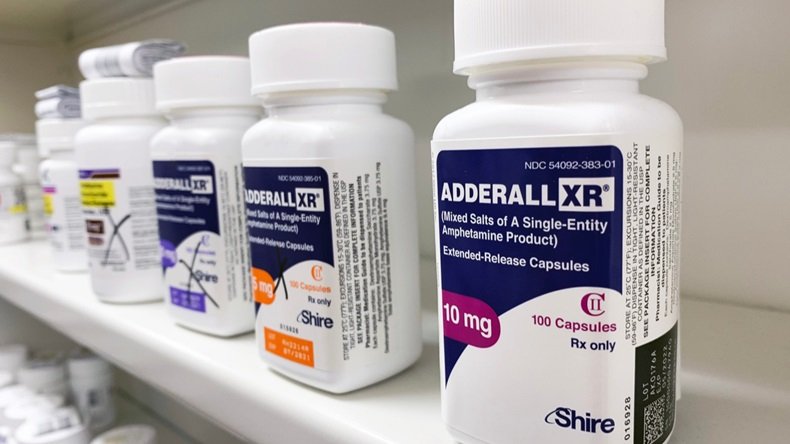ADHD, Adderall, and the Labor Shortage
Article by Joseph Bilas, TPT Staff Writer
Adderall shortages sweep across the country leaving many without the medication required to function in society.
Earlier this year, on October 12th, the FDA declared a shortage of Adderall catching many in the ADHD community off guard. Adderall prescriptions play a critical role in treating ADHD, and without it, the consequences could be catastrophic. By early October, seven out of nine companies that manufacture Adderall and its generic variations reported problems with manufacturing. More specifically, Teva Pharmaceuticals, one of four companies responsible for half of the total supply of Adderall produced in the United States, cited the ongoing labor shortage as the reason for their drop in production.
In September, the Bureau of Labor Statistics reported 10.7 million job openings. One month later, the unemployment rate stood at 3.7%, or 6.1 million people, the lowest it’s been since July of 2019. Even if unemployment fell to zero, which is impossible, there would still be a significant amount of job openings. To further underscore the substantial threat the labor shortage poses, it’s part of the reason inflation has persisted for so long, and may not leave anytime soon—impacting every American across the nation.
To remedy this crisis for both the economy and the ADHD community, we must first understand its causes—one of which can be found in the nation’s immigration numbers. According to the Migration Policy Institute, in 2016 the U.S. saw 1.18 million immigrants enter the nation. In 2020, with the onset of the pandemic, that number collapsed to 707,362. The following year rebounded, but only by 33,000. Further exacerbating the problem, an estimated 3 million baby boomers went into early retirement as a result of the pandemic. It’s clear that both low immigration and high rates of early retirement have contributed to this labor shortage. What’s more concerning, however, is the fact that Citizens and Immigration Services has cited the 2023 work visas limit (which is the amount of immigrants allowed into the U.S. specifically for employment purposes) at “approximately 197,000.” With 10.7 million job openings in September, and about 4 million applicants held in the immigration backlogs, this limit of only 197,000 work visas underlines the critical role immigration reform will play in defeating the current labor crisis and securing our economic future.
Large-scale immigration reform would significantly alleviate the current Adderall shortage, but the only feasible short term solution is for the DEA to take action by lifting the manufacturing limit for Adderall produced by U.S. companies, for example, or by lifting the limit of Adderall imported into the U.S. until domestic production catches up with demand. As of now, the DEA has signaled no intention to act even as they have estimated the shortage to last until March.
To understand the major implications this shortage is having on the ADHD community, we must first understand what ADHD is. To simply define it, ADHD – Attention Deficit Hyperactivity Disorder – is caused by neurotransmitters in the brain that release chemicals—such as dopamine—in smaller quantities and at slower rates compared to those without ADHD. In short, brain signals are weaker, and travel at slower speeds. This causes a deficiency in executive functioning abilities, which manifests itself through symptoms such as inattentiveness, impulsive behavior, lack of self awareness, lack of motivation, decreased processing speed, inability to regulate actions and emotions, inability to access working memory, and an inability to organize and prioritize tasks, to name a few. Stimulant medication like Adderall levels the playing field by allowing people with ADHD to have neurotransmitters that operate at the same speed and quantity as people without ADHD.
To highlight the potentially catastrophic effects of the Adderall shortage, we must note the severe mental health consequences for those with untreated ADHD. Rates of attempted suicide for those with untreated ADHD is 4.7% higher for men, and 4.9% higher for women when compared to those without ADHD. Demonstrating the critical role medication plays in treating ADHD is a 2019 study published in the journal of Biological Psychiatry, which found that medication reduced the risk of suicide attempts for those with ADHD by 39% compared to those who were not on medication. Compounding this initial finding is the fact that the risk of suicide decreased each successive year by 28% as long as individuals consistently continued their medication. The crucial detail to note is that these trends only held true for stimulant medications, such as Adderall, and continued to hold true even if individuals had a previous diagnosis for depression or substance-use disorder. If people are left without ADHD medication, it’s clear our nation’s suicide crisis will only be exacerbated. Not only does the study illustrate the effectiveness of ADHD medication, it demonstrates the life threatening consequences of the Adderall shortage and highlights a critical reason as to why the DEA must take action to bring this shortage to an end.
As the ADHD community continues to grapple with the crippling effects of the Adderall shortage, which has proven to be an offshoot of the labor shortage, we must ask the question: who’s next? As long as this labor shortage persists, every part of the economy is at risk of succumbing to the same situation. Americans across the country are already dealing with rising prices in the store, on the rent, and at the pump. Can we really avoid ignoring the labor shortage any longer? It’s abundantly clear Congress must act, and the best way to ensure they do is by informing your Congressperson of the Adderall shortage, how the labor shortage is contributing to it, and stressing the fact that our nation’s need for immigration reform is not only affecting people near the Southern Border, but people as far north as Illinois and all across the country.
At this critical crisis and current crossroads in our history, young people are being called to step up and meet the moment. It’s up to us to rally friends and family to write letters, participate in town halls, and meet with our Representatives and Senators. It’s time we push Congress to pass immigration reform that upholds the dignity of all those seeking entry into our country, and secures our future economic prosperity. It’s time we push Congress to ensure the DEA acts to alleviate the Adderall shortage and secure the wellbeing of the ADHD community.
The views articulated in this piece are the writer’s own and do not necessarily reflect the official stances of The Progressive Teen or High School Democrats of America.


